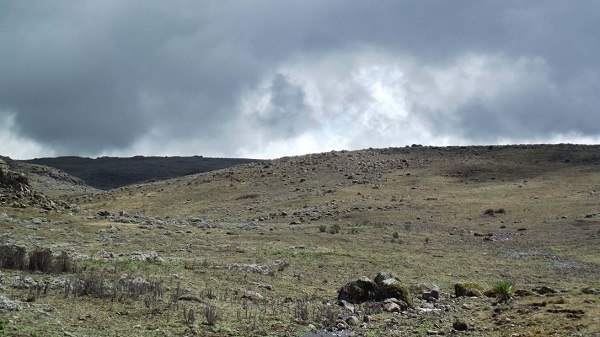
An international research team discovered the oldest high mountain dwelling at an altitude of almost 3,500 meters in Ethiopia’s Bale Mountains.
(SWI swissinfo.ch) – Stone Age hunters lived in the high mountains of Ethiopia more than 40,000 years ago, the University of Bern (Switzerland) announced on 8th August 2019.
An international team with Swiss participation discovered the oldest high mountain dwelling at an altitude of almost 3,500 meters in Ethiopia’s Bale Mountains.
The archaeological find revealed that the hunters made tools from obsidian and fed on giant mole rats, as the scientists reported in the academic journal “Science“. Charcoal remains also came to light during the excavations.
The scientists concluded that the shelter was repeatedly inhabited between 47,000 and 31,000 years ago. However, it is still unclear whether Stone Age settlers lived there permanently, according to the journal.
Stress for the body
Life at great heights is challenging and means stress for the human body. For this reason, it had long been assumed that people only began to settle at altitudes above 2,500 meters relatively recently. However, various archaeological finds in recent years indicate that the settlement of the high mountains began earlier than previously assumed.
“Based on the radiometric dating of various archaeological materials, this site is the earliest long-term home of a high mountain region known to us worldwide,” said archaeologist and study author Götz Ossendorf from the University of Cologne (Germany) about the find in Ethiopia.
Living among glaciers
Three researchers from the University of Bern were also involved in the study: Alexander Groos, Heinz Veit and Naki Akçar. They reconstructed the environmental and climatic conditions around the site. The scientists analyzed and dated rock samples of moraines from several valleys of the Bale Mountains.
Today these mountains are ice free. During the last cold period about 40,000 years ago, however, there were glaciers not far from the Fincha Habera rock shelter, as the researchers were able to prove. Moraine walls and other glacial remains testified to an intense glaciation, Groos explained in a statement.
Source: SWI swissinfo.ch
